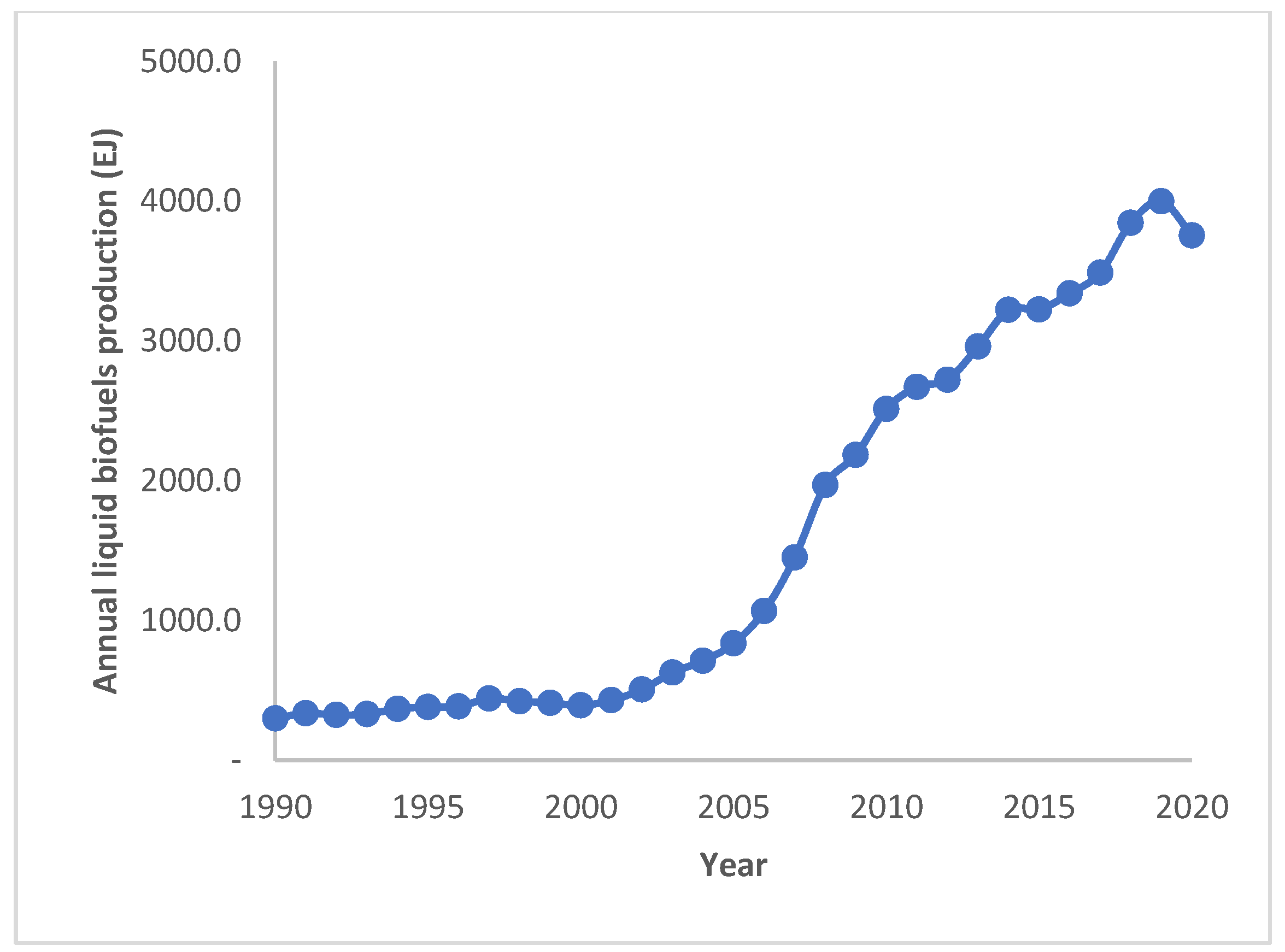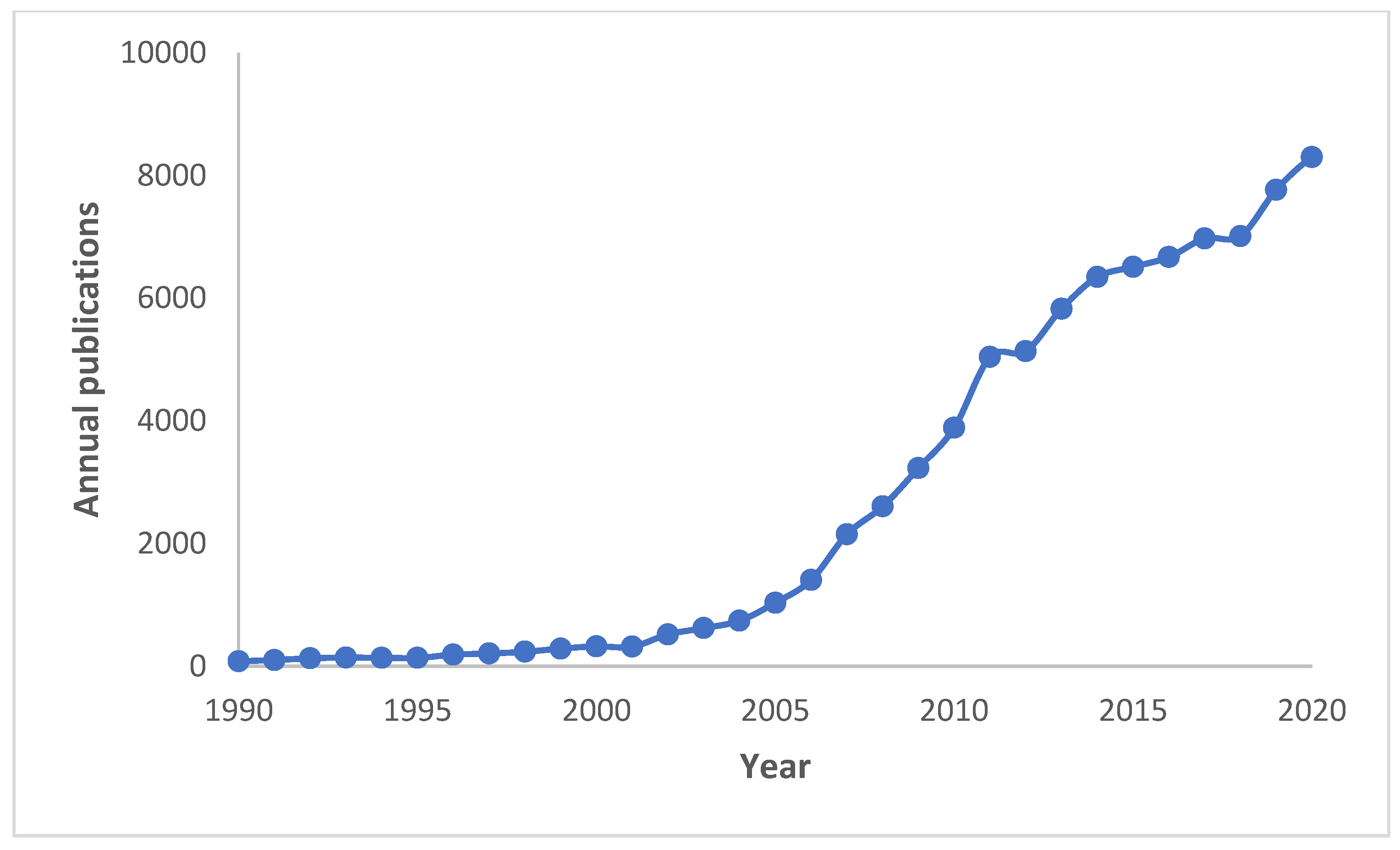For all of human history except the past two centuries or so, bioenergy provided nearly all the world’s primary energy. Then, fossil fuels largely replaced bioenergy, but concern about climate change and fossil fuel depletion will force a move back to renewable energy, including bioenergy. The main method used here to study the future of global bioenergy was a literature surview of relevant published papers, with emphasis both on those published after 2020, and those having a global focus. The key finding is that bioenergy is unlikely to greatly increase its share of global energy consumption, for several reasons. Liquid biofuel production for transport is likely to almost disappear as countries progressively phase out internal combustion engine vehicles. Traditional firewood use is also projected to fall. There are also doubts about the technical potential of bioenergy, not only because it must compete with the other uses for biomass—food, fodder, fibre and timber—but also because in many cases its climate change mitigation impact is less than for other approaches, including alternative renewable energy sources. The overall conclusion is that bioenergy will have a minor but still useful role in the future global energy system, but global energy reductions are likely to be more important for climate stability than bioenergy.
For hundreds of millennia, bioenergy provided humans with nearly all their energy needs. Over the past two millennia or so, very small amounts of water, wind, solar and geothermal energy were also used
[1]. Small quantities of fossil fuels (FFs) were also combusted, until the rapid growth of coal after 1800, followed by oil and gas in the 20th century, saw FFs eclipse bioenergy as the dominant energy source. Even in 1850, wood still accounted for over 90% of all primary energy. Although the share of all forms of bioenergy has fallen to around 10%, total bioenergy production today is probably as high as it has ever been
[2]. Further, it is still by far the largest global renewable energy (RE) source.
The 10% figure for bioenergy share of total primary energy is a global average. Its share varies widely from country to country, from 80% or more in some African countries, to near zero in countries like Kuwait, Singapore or the UAE
[3]. In tropical Africa, as well as some Asian and Latin American countries, bioenergy is consumed in the form of fuelwood or animal dung, and is combusted at very low energy efficiencies. This traditional use of bioenergy still appears to account for a significant share of bioenergy use today (
Table 1). Other forms of bioenergy include conversion into liquid fuels for transport (chiefly bioethanol and biodiesel), as a fuel for electric power production and modern boilers, and as an input into the production of biogas.
Table 1 gives the breakdown for bioenergy in year 2020, as reported by the International Energy Agency (IEA)
[4]. One problem is that, although statistics for modern bioliquids are fairly accurate, those for traditional fuelwood are not. Since few if any low-income countries measure fuelwood used, the global estimates are at best a guess. It is also possible that biogas use is undercounted
[5].
Table 1. IEA estimates of present (2020) global bioenergy (EJ), by type.
Henry Ford’s 1908 T-model was designed to run on ethanol as well as gasoline or kerosene (and Rudolf Diesel designed his engine to run on vegetable oils). However, steadily declining gasoline prices—and the advent of Prohibition in the US—made widespread use of ethanol as a fuel impractical
[6]. Although ethanol (EOH) as a vehicle fuel has a long history, in the US, production of liquid biofuels was greatly boosted by the Renewable Fuel Standard (RFS) of the 1970s, which mandated a minimum volume of renewable fuel for transport fuels, mainly for energy security reasons in the wake of the OPEC oil embargo
[7].
Since then, the RFS goal has been broadened to respond to the climate change implications of transport fuels. Today, according to Lark et al.
[8]: “To comply with the policy’s GHG reduction goals, the RFS requires conventional renewable fuels to generate life cycle GHG savings of at least 20% relative to gasoline.” At present, more than 98% of US gasoline has EOH added to reduce air pollution
[9]. However, as in other countries, EOH production is also seen as promoting energy independence and rural prosperity. Ethyl tertiary-butyl ether (ETBE), derived from bioethanol, is an alternative additive, but there are concerns about groundwater contamination
[10].
Figure 1 shows the growth in global liquid biofuels production from the 1990s to present. The two leading countries for production are the US, where corn is the main input feedstock, and Brazil, where cane sugar is the preferred feedstock. In 2020, these two countries accounted for almost 60% of global liquid biofuel production
[11]. Most of the rest is produced in Europe, where a variety of feedstocks are employed, including seed oils and grain, and Asia, particularly Indonesia, where biodiesel is produced from palm oil
[12]. Global output fell in 2020, which is probably the result of lower global road travel in that year, caused by the COVID-19 pandemic. However, global bioethanol production in 2021 was still well below the 2019 value
[11], despite the pick-up in global road transport and transport fuels generally.
Figure 1. Global liquid biofuels production (in EJ) from 1990 to 2020. Source: BP
[11].
As
Table 1 shows, bioenergy can be used in solid, liquid or gaseous form, and so it is more versatile than other RE sources. It is also the only RE source which is combusted like FFs—in fact, all FFs have originated from biomass. It can be mixed with FFs as a fuel in thermal power stations. Other RE sources either produce primary electricity (hydro, wind, solar, tidal and wave energy) or heat, which can either be used directly, or fed to a thermal power station (geothermal)
[1]. Because bioenergy exists in material form, it is not necessary to convert it into other energy forms for storage, as is the case for most other RE sources
[5]. The exception is hydropower, where the energy is stored as gravitational energy. Bioenergy can also be stored as living plant mass, and harvested as needed.
The world population has already passed 7.9 billion, and the UN median forecast for 2050 is over 9.7 billion, and for year 2100, nearly 11 billion
[13]. Many hundreds of millions of the present world population have an inadequate calorie intake and otherwise inadequate diets, and this number could rise if progressive climate change decreases yields of important food crops
[1]. A key problem is the possible conflict between food crops and bioenergy production. This is especially the case with modern bioliquids, as they use either cereals (mainly corn) or sugar cane for making bio-ethanol, and edible oils for making biodiesel. The European Union proposal was originally for 10% of transport fuels to be from bioenergy by 2020, but more recent policies recognise the negative impacts of bioliquids consumption, especially from palm oil production
[14].
As a response, particularly in the US, interest was revived in producing ethanol from cellulosic materials, such as crop or forestry wastes, a technology more than a century old. In 2007, President George W. Bush “announced a proposed mandate for 35 billion US gallons (130 × 10
9 litres) of ethanol by 2017”
[15]. However, the technology is complex, and the resulting EOH is expensive compared to gasoline. The result is that there are still no commercially operating cellulosic ethanol plants: in the US in 2021, less than one million litres were produced
[16].
In recent years, a number of countries and cities, mainly in Organization for Economic Cooperation and Development (OECD) countries, have made plans to ban the sale of internal combustion engine vehicles (ICEVs) by year 2030 or 2040, mainly to decrease urban air pollution
[17], although climate change mitigation is also seen as important. Even though the introduction of three-way catalytic converters and unleaded petrol has greatly reduced air pollution, oxides of nitrogen, produced by high-temperature combustion, have proved harder to reduce.
Such a ban would affect liquid biofuels—even though, as shown above, EOH was introduced as an additive to reduce air pollution—as well as oil-based fuels and natural gas. The only vehicles allowed would be either electric vehicles (EVs) or hydrogen fuel cell vehicles. EVs have shown extraordinary growth in numbers in recent years, and in 2021, the global vehicle fleet numbered 11.3 million worldwide
[18], encouraged by various subsidies, including subsidies for EV purchases, and waiving of fuel taxes. The IEA anticipates this number rising to between 139 and 227 million as early as 2030
[18][19]. Even without ICEV bans, the future of all combusted fuels for ICEVs appears bleak. One sector where liquid biofuels may have a future is aviation. In 2019, global final energy consumption for aviation was 14.4 EJ, compared with 120.9 EJ for all transport. At present, bioliquid use in aircraft is tiny, but the Biden administration has outlined a “Grand Challenge” to meet 100% of aviation fuel demand from bioliquids by 2050
[16].
Despite the probable difficulties liquid biofuels for transport—especially light vehicle passenger transport—will face in the future, research interest in biofuels in general and even in liquid biofuels, is still very high.
Figure 2, using the Scopus database of published papers, shows papers published since 1990 containing at least one of the terms “bioenergy”, “bioliquids”, “bioethanol”, “biodiesel”, “biomethane”, or “fuelwood” in either the title, abstract or keywords. Liquid biofuels are still considered an option for some transport uses, such as air travel
[20]. One area of increased interest is in the so-called bioeconomy, which would give an important place for bioenergy
[21][22][23]. According to Ubando et al.
[21], a “Biorefinery is a sustainable means of generating multiple bioenergy products from various biomass feedstocks through the incorporation of relevant conversion technologies”. Further, biorefineries act “as a strategic mechanism for the realization of a circular bioeconomy”. Any move toward a bioeconomy should lead to heightened interest in bioenergy, as costs can be shared among the various products produced.
Figure 2. Scopus database for biofuels papers published annually vs. year, 1990–2021.
This Introduction has emphasised the history and current status of liquid biofuels more than the other bioenergy sources because, as mentioned, liquid biofuels, for surface transport at least, do not appear to have much of a long-term future. The research question this review asks is “What is the future for bioenergy?” The rest of this review is accordingly organised as follows. The first problem is how to select the papers to be reviewed from the thousands available. The global technical potential for bioenergy, and likewise its climate change mitigation potential, are key questions for assessing bioenergy future potential as an energy source. The future of bioenergy is next examined, as seen by various international energy organisations and companies. Finally, conclusions are offered, stressing both the uncertainty of all future forecasts, and that bioenergy must compete with other non-carbon sources, as well as with energy reductions and carbon dioxide removal (CDR).







